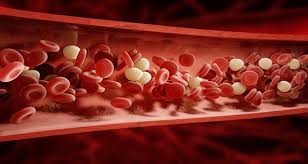Artificial Blood: A Vision of the Future in Transfusion Medicine
Artificial blood is a cutting-edge transfusion medicine idea in which specially made chemicals replace allogenic human blood transfusion by transporting and delivering oxygen throughout the body.
RBCs from expired human blood, cow
blood, hemoglobin-producing genetically modified microorganisms, or human
placentas are frequently used to make artificial blood in dark red or burgundy
colours. The artificial haemoglobin molecules have been engineered to form a
strong structure and to function without the RBCS protective coating. A blood
substitute (also known as artificial blood or blood surrogate) is a substance
that looks and operates like genuine blood. Hemoglobin-based oxygen carriers
(HBOC) and perfluorocarbon-based oxygen carriers are the two main types of
"oxygen-carrying" blood replacements being researched (PFBOC).
 |
| Artificial blood Market |
Is it possible to make artificial
blood?
Artificial
blood can be made in a variety of techniques, including synthetic
manufacturing, chemical isolation, and recombinant biochemical technologies,
depending on the kind. The first blood substitutes were developed in the early
1600s, and the search for the perfect blood substitute is still ongoing.
Is Artificial blood superior to human
blood?
Artificial blood could potentially transport oxygen faster
than real blood in an emergency and reduce tissue damage, especially in the
case of a heart attack.
Why do we require Artificial blood?
Blood replacements are more durable
than actual blood and can endure more extreme conditions. They also don't need
to be refrigerated and can be utilised in a pre-hospital setting. Synthetic
blood transports oxygen to the body faster than actual blood, reducing the risk
of harm, especially during a heart attack.
Advantages of Artificial blood:
A larger concentration of oxygen would be
delivered from the lungs to the muscles through the bloodstream, which might
boost an individual's physical speed, strength, and stamina greatly.
Disadvantages of Artificial blood:
It is not a real blood substitute; it
just substitutes oxygen carrying capacity.
Binds nitric acid, causing blood flow
to be affected.
Increases the levels of bilirubin,
amylase, and lipase.
Haemoiderosis and chronic overload are
possible side effects.



Comments
Post a Comment